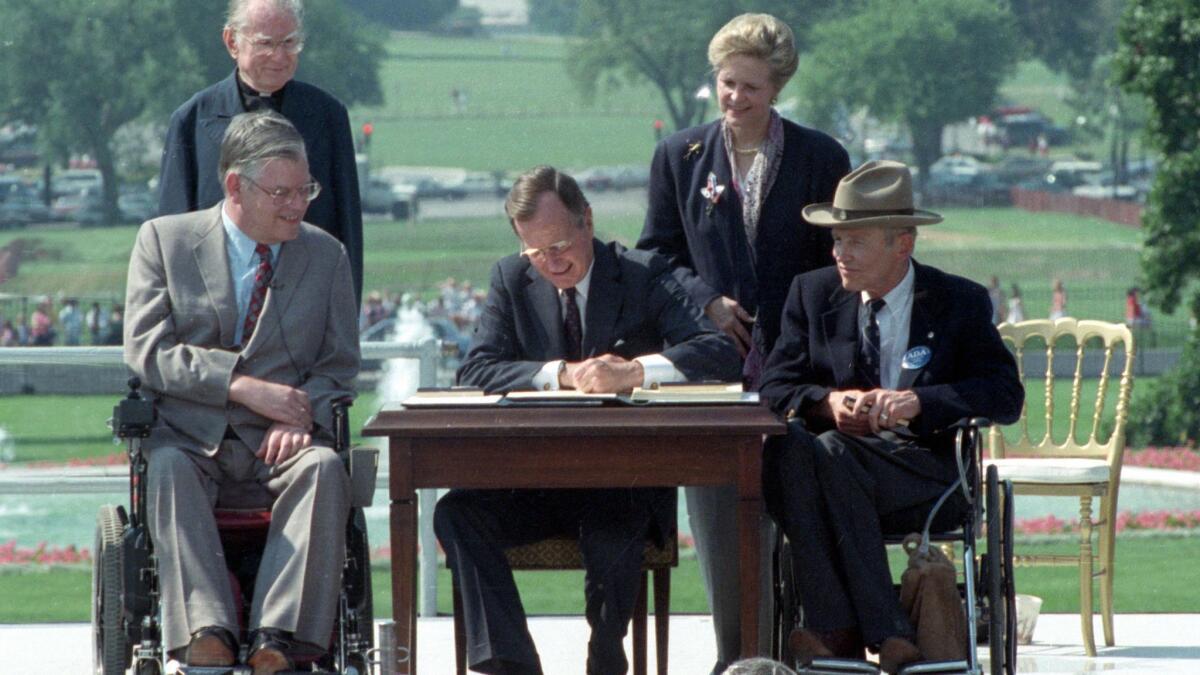Commentary: Working to improve access while celebrating 30 years of the ADA

The Americans with Disabilities Act (ADA) became law in 1990. Most of us who were alive at the time remember vividly the sight of people abandoning their wheelchairs and crawling up the 78 marble steps of the U.S. Capitol to make their voices heard. The civil rights law they fought for and won prohibits discrimination against individuals with disabilities in all areas of public life, including jobs, schools, transportation and all public and private places that are open to the general public.
Now 30 years later where exactly are we? Obviously we have more accessible buildings by law. Curb cuts and doorways allow people to enter buildings that were formerly closed for people with mobility issues. But we have a long way to go to make the world accessible for people with disabilities.
The soft skills people take for granted are often the most difficult for people with a cognitive disability. Learning how to get by in a world with completely opaque social norms are sometimes the most difficult to master. In 2020 we are quick to judge and slow to assume innocence.
In California we have an entire system to support people with developmental disabilities. But people with disabilities see their support services come and go as they are historically underfunded and plagued by staffing shortages that are compounded by the high cost of living and minimum wages.
Stabilizing the system in California must start with stabilizing the support structure that helps people live on their own and work through daily trials and tribulations. We’ve closed archaic state hospitals and made a promise here in California called the Lanterman Act passed in 1969.
That promise is simple — people with developmental disabilities should have equal opportunities to live, work and recreate with their non-disabled peers. We must all stand together to see that this promise is kept. We’ve moved away from the institutionalization and space is more accessible, so now we must adequately recognize the myriad obstacles and provide the support that is required.
In 20 years when we celebrate the 50th anniversary of ADA, let’s make sure the other doors are not only wide enough, but also open and welcoming to all of our citizens. Resources that were once spent on congregate care need to be made available for community support. Universal design in apartments, adequate staff pay and professional training should be the norm. It’s a human right.
The writer is CEO and president of Project Independence, a Costa Mesa-based nonprofit.
All the latest on Orange County from Orange County.
Get our free TimesOC newsletter.
You may occasionally receive promotional content from the Daily Pilot.



